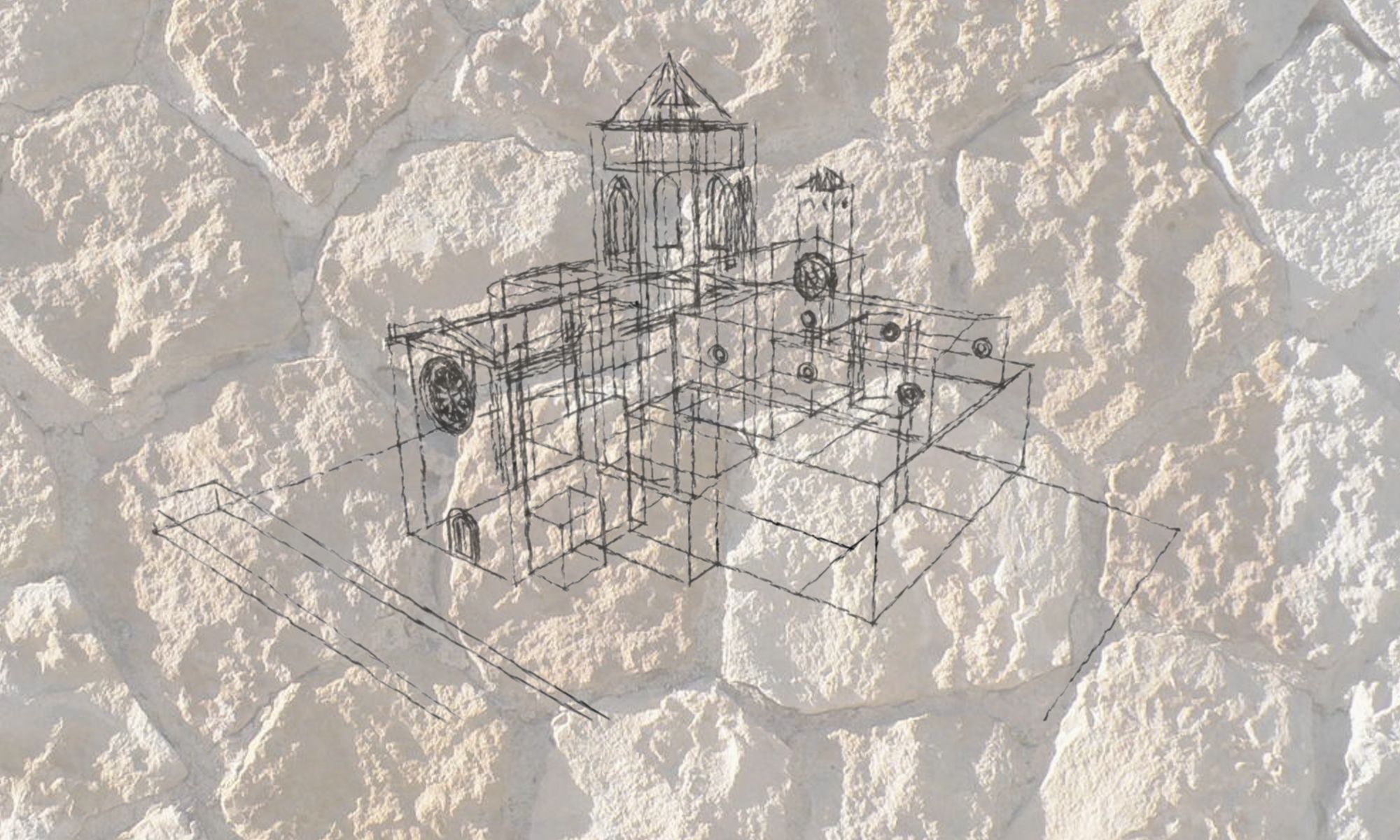Principal arch construction
(“Prinzipalbogenkonstruktion”) One major advance of the gothic architecture was the increase in efficiency: with the help of the principle arch the stones for the vault could be crafted in advance. The master-builders tried to use as many arches as possible with the same radius so that the masons could manufacture the stones according to sketches on the floor (sometimes those sketches can be found, scraped into the floor somewhere in the church where it is not visible for the visitor). Using the sketches stones could still be crafted when church-building was not possible, e.g. in the winter. In the Romanic period the stones were usually crafted and fit „on demand“.
The windows
The geometric construction of the pointed arch is easily done with two circles whose center points are situated at the starting point of the arch. For higher flexibility in the design the arches could be „pressed“ or „stretched“ (the center points move outwards or inwards).


The gothic design is strongly based on basic geometric forms, largely decorated and crafted into every detail. It can be assumed that medieval windows were rich in colored glass and themes.
cranes
Cranes were used in medieval construction sites. The had a treadwheel for 1-2 persons. Due to their weight they were not installed on high framework or on top ofsingle thin walls. Instead they started on the ground at the first building phase and were then placed higher when the next level was built and secured. [5a] : “That way the crane grew and „moved“ with the increasing building so that all medieval cranes that exist today [in Britain] are above the vault and below the roof of medieval church towers because they were not removed after completion of the building to allow the transport of material for repair“.
the walls
The walls usually consisted of an inner core and outer cladding. Between both were „connectors“ that avoid displacement between both. In case of displacements the pressure at the outer cladding increases and results in cracks or flections that are visible. The core is usually composed of untrimmed stone or boulder glued together with mortar (with the mortar as the weakest link in the structure). The stones for the outer cladding were usually crafted carefully on 5 sides, the 6th side was let for toothing with the core of the wall to increase stability. Many problems with medieval buildings result in insufficient toothing between the outer cladding and the core.

Foundations
At best there were some experiences in medieval times about how deep thefoundations should be. The „projects“ usually took a very long time (200 years were no exception) so each master-builder had only a few possibilities in his life to gather experience about the foundations. Sometimes one master-builder was in charge for several construction sites but they did not have our understanding about the configurations of the soil and these changed from place to place. According to source [4d] the ground was tested by driving stakes into the soil—if that didn’t work because the soil was too dense the constructions could begin. If the stakes could be hammered into the ground then the soil had to be densified throughout the whole construction site until the boss was satisfied. Varying loads to the ground e.g. a (heavy) tower and (lighter) main building walls often lead to diverging ground setting behavior forcing the crew to a break until the earth came to a rest (which sometimes took years !).
Quite a few towers collapsed—during the progress of construction, too—because the ground gave way. In e.g. northern Germany very often churches are equipped with signs about its history (don´t know why they avoid that in the southern part of Germany…) and on these signs the collapse of the tower is described quite often. There are sloping towers that still exist, the most famous one is the leaning tower of Pisa (originally designed for escape and location of the church bells). In the case of Pisa construction was paused for 100 years to let the soil settle (and after another period of building they had to wait for additional 100 years for the soil to settle). In the case of Pisa there are very special soil conditions: the tower stands on the edge of an ancient island next to a once silted up dock.
